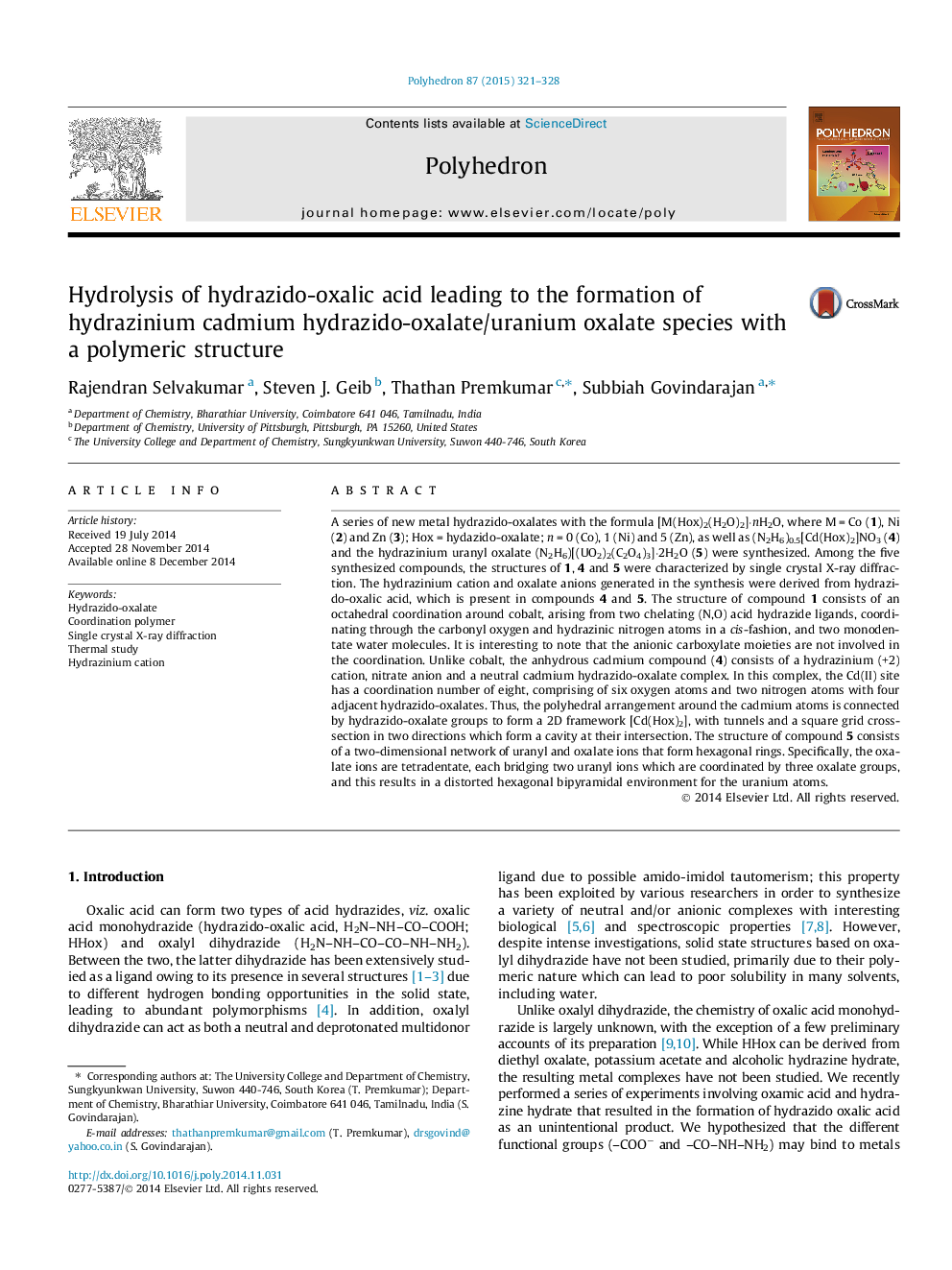| کد مقاله | کد نشریه | سال انتشار | مقاله انگلیسی | نسخه تمام متن |
|---|---|---|---|---|
| 1337373 | 1500252 | 2015 | 8 صفحه PDF | دانلود رایگان |
A series of new metal hydrazido-oxalates with the formula [M(Hox)2(H2O)2]·nH2O, where M = Co (1), Ni (2) and Zn (3); Hox = hydazido-oxalate; n = 0 (Co), 1 (Ni) and 5 (Zn), as well as (N2H6)0.5[Cd(Hox)2]NO3 (4) and the hydrazinium uranyl oxalate (N2H6)[(UO2)2(C2O4)3]·2H2O (5) were synthesized. Among the five synthesized compounds, the structures of 1, 4 and 5 were characterized by single crystal X-ray diffraction. The hydrazinium cation and oxalate anions generated in the synthesis were derived from hydrazido-oxalic acid, which is present in compounds 4 and 5. The structure of compound 1 consists of an octahedral coordination around cobalt, arising from two chelating (N,O) acid hydrazide ligands, coordinating through the carbonyl oxygen and hydrazinic nitrogen atoms in a cis-fashion, and two monodentate water molecules. It is interesting to note that the anionic carboxylate moieties are not involved in the coordination. Unlike cobalt, the anhydrous cadmium compound (4) consists of a hydrazinium (+2) cation, nitrate anion and a neutral cadmium hydrazido-oxalate complex. In this complex, the Cd(II) site has a coordination number of eight, comprising of six oxygen atoms and two nitrogen atoms with four adjacent hydrazido-oxalates. Thus, the polyhedral arrangement around the cadmium atoms is connected by hydrazido-oxalate groups to form a 2D framework [Cd(Hox)2], with tunnels and a square grid cross-section in two directions which form a cavity at their intersection. The structure of compound 5 consists of a two-dimensional network of uranyl and oxalate ions that form hexagonal rings. Specifically, the oxalate ions are tetradentate, each bridging two uranyl ions which are coordinated by three oxalate groups, and this results in a distorted hexagonal bipyramidal environment for the uranium atoms.
The figure is a schematic representation of the reaction of hydrazido-oxalic acid with metal nitrates. The crystal structures of the complexes revealed that the ligand is bound to the metal with two different coordinating modes (bidentate chelating and tetradentate chelating-cum-bridging). In the case of the cadmium and uranyl complexes, the ligand was hydrolyzed to hydrazine and oxalic acid, leading to the formation of a 2D-polymeric structure.Figure optionsDownload as PowerPoint slide
Journal: Polyhedron - Volume 87, 17 February 2015, Pages 321–328
